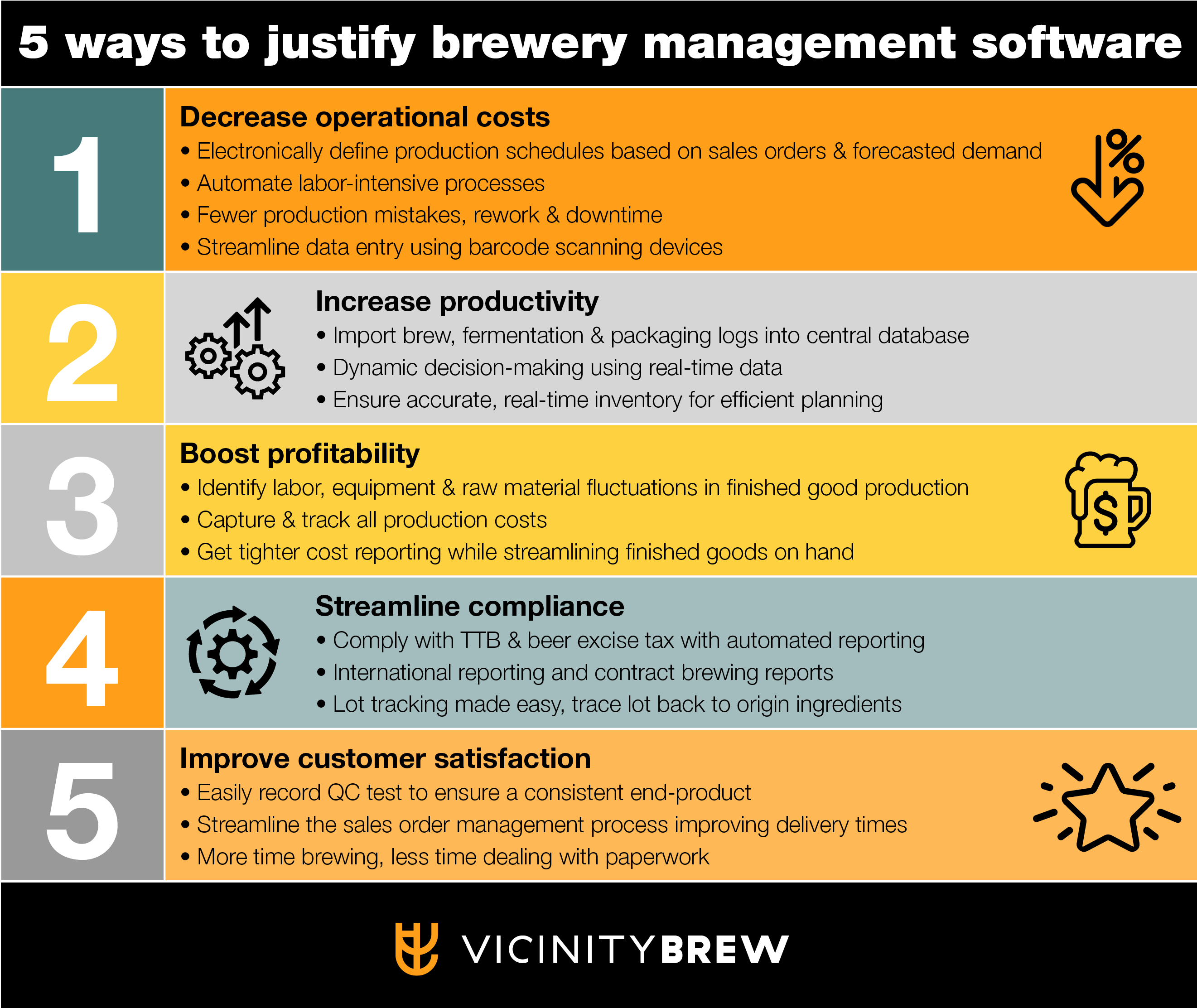5 ways to justify your brewery management purchase
As your business evolves, challenges will present themselves along the way. You will be faced with making strategic decisions to support growth and prioritizing obstacles will be a difficult job.
Making a software selection and investment at the “right time” can save your organization more than just money in the long run.
Here are 5 ways to justify purchasing brewery management software:

- Decrease operational costs
- Electronically define production schedules based on sales orders and forecasts
- Automate labor-intensive processes
- Fewer production mistakes
- Streamline data entry
- Increase productivity
- Import brew, fermentation and packaging logs into one place
- Use real-time data to make real decisions
- Ensure accurate inventory
- Boost profitability
- Identify labor, equipment & raw materials in finished goods
- Capture and track all production costs
- Get tighter cost reporting while streamlining finished goods
- Streamline compliance
- Comply with TTB and beer excise tax requirements
- International reporting and contract brewing reports
- Lot tacking made easy
- Improve customer satisfaction
- Easily record QC tests
- Streamline the sales order process and improve delivery
- More time brewing and less time dealing with paperwork
Connecting departments with a shared database pays dividends beyond feature functionality. Access to comprehensive data changes the conversation from return on investment to return on information.
Having a software solution empowers your organization beyond a direct software ROI analysis. The information collected and insight gained will help your brewery to make strategic decisions and set future goals. If you would like to learn more about VicinityBrew Software or want to schedule a demo, contact us today!
Other articles you might like:
